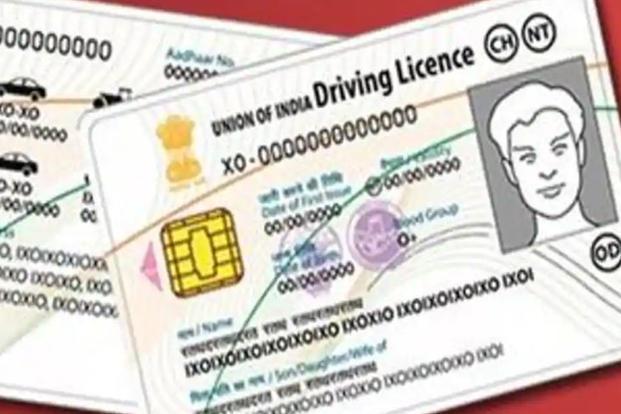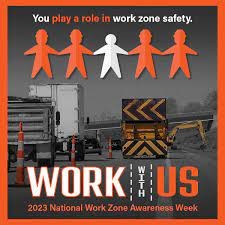Roadside inspections are a way of life for commercial motor vehicle (CMV) drivers. They take on special emphasis during the annual Commercial Vehicle Safety Administration (CVSA) International Roadcheck, set for May 16-18th this year in North America. This year the focus will be on anti-lock braking systems (ABS) and cargo securement, and you and your drivers can prepare now to ensure inspections go smoothly. But as motor carriers know, inspections occur well beyond 72 hours annually in May.
Here are 8 CVSA inspections that every carrier and driver should understand:
- Comprehensive driver and vehicle. This is the most common type of inspection and the most thorough. The investigation covers the driver and vehicle and takes about 45-60 minutes to complete. A driver will be asked to produce documents such as his or her commercial driver’s license (CDL), medical card, and record of duty status. The vehicle portion will check the components — brakes, frame, fuel system, lights, cargo securement, hazardous materials, tires, etc.
- Walk-around. The walk-around inspection is like the comprehensive level 1 inspection but does not include looking at components requiring the inspector to get under the vehicle physically. The walk-around takes about 30 minutes to complete.
- Driver-only. This type of inspection involves an inspection of documents about the driver and any hazardous materials. This includes the driver’s CDL, medical card, service hours, and annual inspection documentation.
- Special Inspections. Inspections under this heading typically include a one-time examination of a particular item. These examinations usually are made to support a study or verify or refute a suspected trend.
- Vehicle-only. A driver need not be present for these inspections. They typically occur at a motor carrier’s place of business during an on-site visit. The process is very similar to a comprehensive vehicle inspection and serves as a valid annual inspection. If the vehicle passes, a CVSA decal indicates a certified inspector conducted the inspection.
- Radioactive materials. These inspections are conducted only on select shipments of radioactive material and follow a higher standard than the comprehensive inspection. Any brakes found out of adjustment in this inspection can result in an OOS violation. As of Jan. 1, 2005, all vehicles and carriers transporting HRCQ of radioactive material are regulated by the U.S. Department of Transportation (DOT) and must pass the North American Standard Level VI Inspection.
- Jurisdictional Mandated Commercial Vehicle Inspection. An inspection that is a jurisdictional mandated inspection program that does not meet the requirements of any other level of inspection. An example will include inspection programs such as, but not limited to, school buses, limousines, taxis, shared-ride transportation, hotel courtesy shuttles, and other intrastate/intra-provincial operations.
- North American Standard Electronic Inspection. The North American Standard Level VIII Electronic Inspection is conducted electronically or wirelessly while the vehicle is in motion without direct interaction with an enforcement officer. Data exchange must include each of the required and/or applicable data points listed in the CVSA North American Standard Level VIII Electronic Inspection definition to be considered a complete Level VIII Electronic Inspection.
Preparation is Key
Knowing what’s expected when inspection time arrives — and having your drivers prepared to deal with inspections professionally and efficiently — can only help your company going forward.
Safe operations lead to fewer inspections, a good safety record, and a better reputation within the industry and with law enforcement officials.
And of course, regularly passing inspections keep you off the Federal Motor Carrier Safety Administration’s (FMCSA) radar for its “Compliance, Safety, Accountability” (CSA) program and out of the FMCSA’s crosshairs for more inspections.
Commercial Vehicle Safety Alliance (CVSA) Driver Tip Sheet
CVSA published this tip sheet for carriers and drivers in preparation for this year’s Roadcheck that you can print off as a handout for your drivers:
http://cvsa.org/wp-content/uploads/what_inspectors_are_looking_for.pdf
Question of the Week
My driver has gone through a roadside inspection; how long must I keep this documentation on file?
Answer: The motor carrier will keep copies of all roadside inspections for 12 months. The driver is required to turn in the inspection to the motor carrier within 24 hours. If they do not return to the terminal, they will mail in the inspection. If the inspection resulted in violations, they must be corrected or repaired. The inspection form is to be signed and certified that the repairs were completed and sent back to the state of inspection within 15 days.
Best Practice Guidelines for Roadside Inspections:
- Train drivers on how to complete good quality pre-trip inspections to reduce the possibility of violations.
- Review CSA monthly at www.ai.fmcsa.dot.gov and enter your DOT number or name.
- Review the vehicle and driver basics with the associated inspections and cross-reference the inspections you have on file with the inspections turned in by your drivers. Question those drivers who did not submit inspection reports.
- Review the “Carrier History” tab in your home page's Tools/Resource section to determine if your number of inspections is rising or declining.
- Review vehicle inspections and violations with your maintenance provider to reduce violations.
- Maintain copies in the tractor and trailer file and any repair orders attached if there were violations.
- Use the roadside inspection information, such as date, time, and location, to cross-reference with the driver's hours of service documentation for falsification violations.
- Train drivers on how to successfully pass a roadside inspection and how to conduct themselves.
- Keep your vehicles clean and well-maintained to avoid being targeted for inspection.
- Advise drivers that moving violations will generate inspections.
- Consider providing an incentive to drivers who successfully pass an inspection.
What documentation must be kept in the vehicle of units I have from Idealease showing that the vehicle is a lease or rented vehicle?
Answer: If the vehicle is subject to the Federal Motor Carrier Safety (FMCSA) regulations (greater than 10,000 lbs MGVWR), then a document is required to be in the unit for the duration of the lease or rental.
Lease vehicles are subject to the FMCSA regulation CFR 376.11(c), stating that a copy of the lease or certified statement of lease with the required information will be kept on the unit during the lease period.
Rental vehicles are subject to the FMCSA regulation CFR 390.21(e)(2)(iv), stating that a copy of the rental agreement is to be carried on the unit for the duration of the rental.
National Work Zone Awareness Week April 17-21st
National Work Zone Awareness Week (NWZAW) is an annual spring campaign to encourage safe driving through highway work zones and construction sites at the start of construction season. The key message is for drivers to use extra caution in work zones. For more information, check out the link below:
The Commercial Vehicle Safety Alliance has announced this year’s International Roadcheck dates as May 16-18
Roadcheck is a 72-hour high-visibility, high-volume commercial motor vehicle inspection and enforcement initiative. Commercial motor vehicle inspectors in Canada, Mexico, and the U.S. will conduct North American Standard Inspections of commercial motor vehicles and drivers at weigh and inspection stations, roving patrols, and temporary inspection sites.
Each year, CVSA focuses on a specific aspect of a roadside inspection. This year the focus will be on anti-lock braking systems (ABS) and cargo securement. ABS violations are not out-of-service violations; however, the anti-lock braking system is critical in reducing collisions. A properly functioning ABS will prevent wheels from locking up or skidding, allowing a driver to maintain vehicle control while braking. Improper or inadequate cargo securement accounted for 10.6% of all vehicle out-of-service violations discovered during last year’s International Roadcheck. Past International Roadcheck data routinely found cargo securement violations in the top five of vehicle out-of-service violations.











